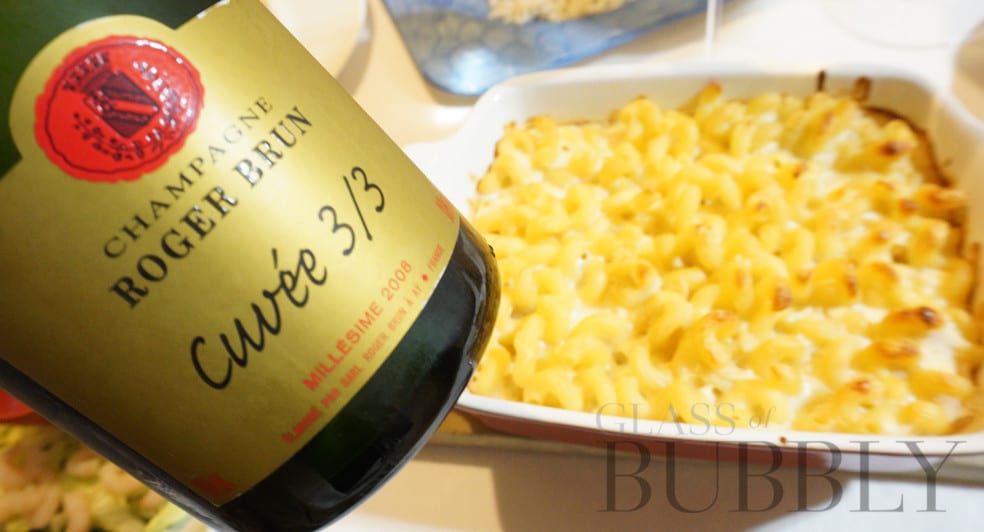Pairing Champagne with Food Whilst Avoiding E.coli
9th September 2024

Did you know you have E. coli bacteria living in your gut? There’s more than one strain of Escherichia coli (E. coli) bacteria, and the majority are harmless. However, a few strains of the bacteria, like E. coli O157:H7 can cause vomiting, diarrhea, and painful stomach cramps.
Knowing the common sources of E. coli is the best way of avoiding this type of bacterial infection and protecting your overall health. E. coli is often passed on through raw and undercooked meats. It can also be spread through other contaminated foods, such as vegetables and salads, water or unpasteurised milk.
To prevent this keep your hands clean and follow four simple steps to food safety: clean, separate, cook, and chill. Follow these rules and enjoy these great food pairings with Champagne:
Oysters
The salty flavor of raw oysters complements the crisp taste of Champagne. The combination of the acidity and minerals from the Champagne can leave a silky umami oyster flavour with fresh, welcome saline.
Macaroni and cheese
Champagne’s acidity cuts through the fat in mac and cheese. The creamy sensation of the dish is slightly reduced by the Champagne.
Seafood and Sushi
Seafood and Champagne has long been a go-to pairing. The success of seafood and sushi pairings has now been recognised as a chemical phenomenon– the official seal of approval needed to enjoy sushi and Champagne together at any opportunity – Umami. For sushi that is richer in flavour or includes spicy elements, opt for a Rosé Champagne.
Fried chicken
The acidity and bright flavor of Champagne cuts through the grease of fried chicken so it’s great for cleansing your palate. The bubbles in Champagne can also make fried chicken taste crispier, which makes the meal more enjoyable.
Steak
A Pinot Noir or Rosé Champagne with its distinct flavors and bold character will pair best with steak and contrast nicely with the rich taste.
Cheese
Champagne and cheese is a match made in heaven. Champagne pairs well with all sorts of cheese from cheddar and Gruyère to buttery and creamy cheeses like brie and camembert. A light, floral Champagne will pair well with milder cheese, while a more complex Champagne will pair well with stronger, mature cheeses.
When pairing Champagne with food, you can consider these tips:
Match the intensity of the dish with the intensity of the Champagne.
High acidity dishes pair well with high acidity Champagnes.
Champagne should be just as sweet, or a little sweeter, than the dessert.
The symptoms associated with E. Coli usually take around three or four days to appear. However, some people can start exhibiting symptoms within 24 hours of exposure to the bacteria. Others may take around a week to start feeling ill.
If you’re wondering how E. coli is treated, the answer may surprise you. Most patients are prescribed rest and urged to drink plenty of hydrating fluids to help prevent issues with dehydration.
Avoiding E. Coli and Staying Healthy
While it may be impossible to avoid all potential sources of E. coli, you can take proactive steps to protect your health.
- Fresh produce: Produce grown near livestock pastures can easily become contaminated. Runoff water from the pasture or livestock pens can contaminate the soil resulting in the appearance of the bacteria. This can especially be a problem for leafy greens like lettuce and spinach. The folded leaves can trap the bacteria making it difficult to wash away.
- Ground beef: If you’re a fan of hamburgers and other foods containing ground beef, you may want to pay attention to any possible product recalls. Remember, E. coli lives in the intestines of both humans and animals. When cattle are slaughtered, the bacteria can spread to the meat and even onto the equipment. Since ground beef is usually mixed with other types of meat, your risk of infection can increase.
- Unpasteurized milk: Also known as raw milk, unpasteurized dairy products are gaining a following. When milk isn’t pasteurized, bacteria like E. coli are often present in the liquid. Even though there are plenty of health warnings about the potential dangers of consuming raw milk, you can still find the products for sale at some farmer’s markets on even a few online marketplaces.
Always wash your hands thoroughly after coming into contact with others or handling food. Be sure to rinse all fresh produce before consuming it, and avoid drinking from natural water sources like streams. By practicing these simple hygiene measures, you can significantly reduce your risk of exposure to harmful bacteria.
![]()
Glass of Bubbly Content
Content shared by this account is either news shared free by third parties or advertising content from third parties and affiliations. Please be advised that links to third party websites are not endorsed by Glass of Bubbly Ltd - Please do your own research before committing to any third party business promoted on our website.
